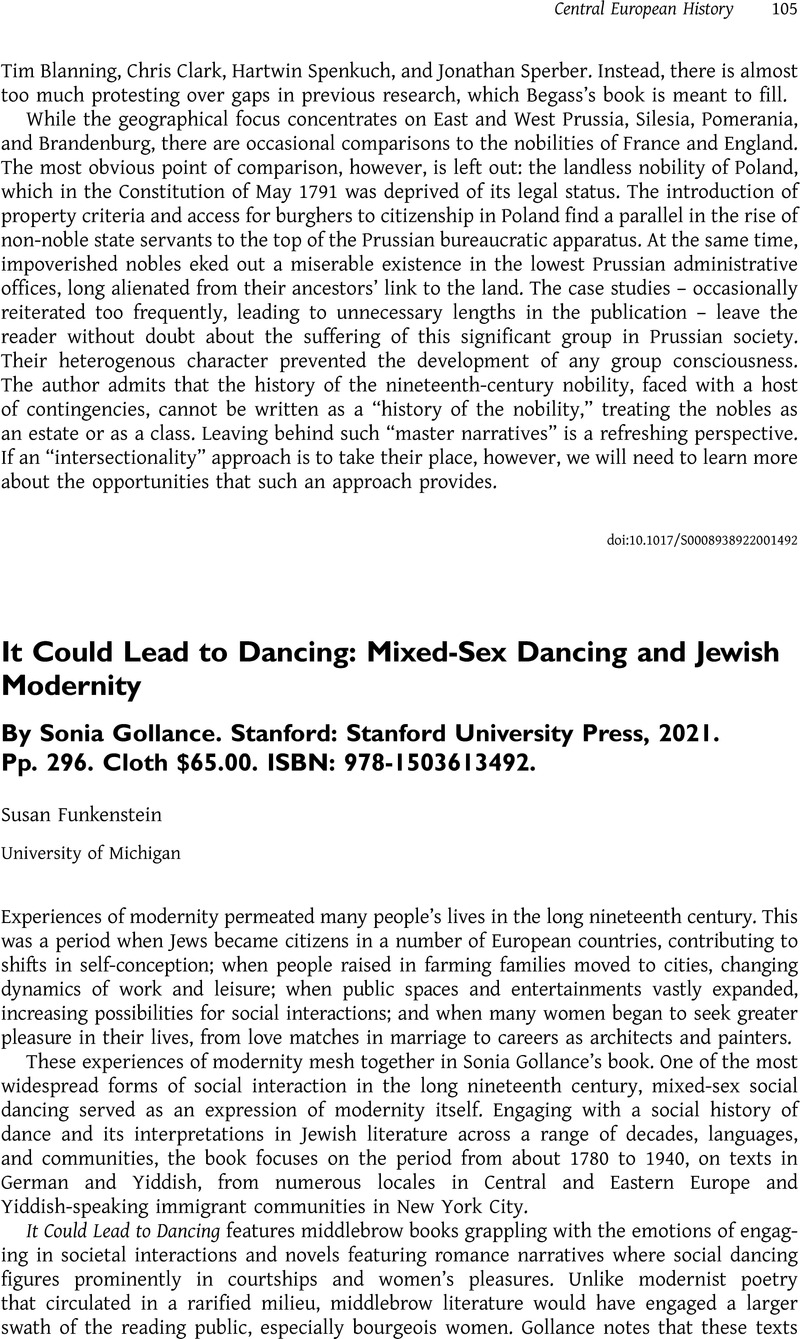No CrossRef data available.
Article contents
It Could Lead to Dancing: Mixed-Sex Dancing and Jewish Modernity By Sonia Gollance. Stanford: Stanford University Press, 2021. Pp. 296. Cloth $65.00. ISBN: 978-1503613492.
Review products
It Could Lead to Dancing: Mixed-Sex Dancing and Jewish Modernity By Sonia Gollance. Stanford: Stanford University Press, 2021. Pp. 296. Cloth $65.00. ISBN: 978-1503613492.
Published online by Cambridge University Press: 24 March 2023
Abstract
An abstract is not available for this content so a preview has been provided. Please use the Get access link above for information on how to access this content.

Information
- Type
- Book Review
- Information
- Copyright
- Copyright © The Author(s), 2023. Published by Cambridge University Press on behalf of Central European History Society of the American Historical Association

